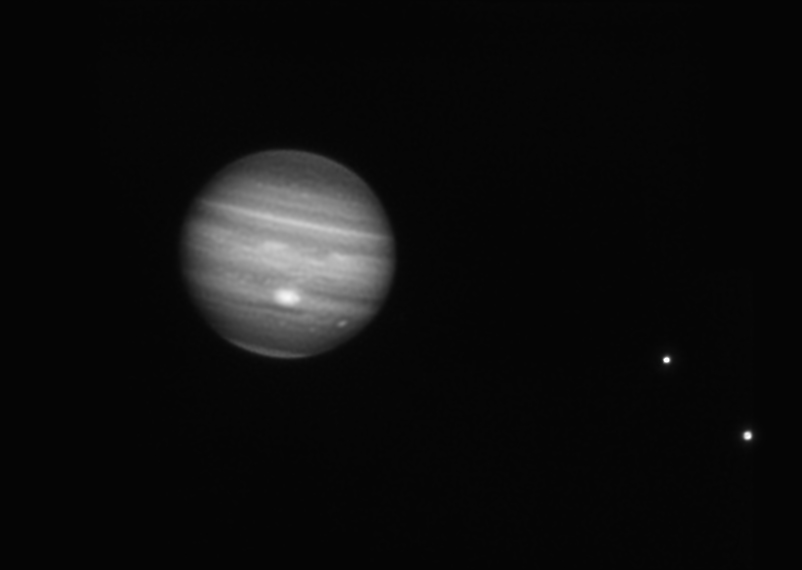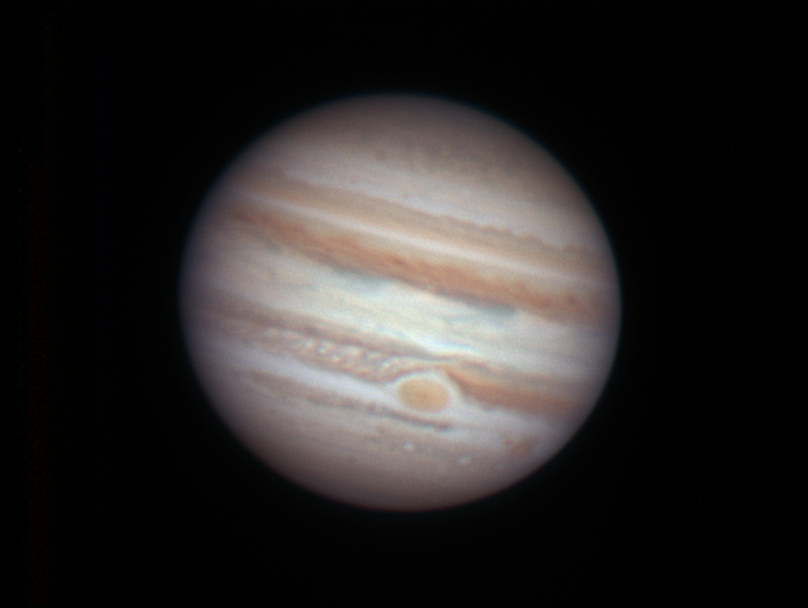

Conditions: some wind, no clouds, not much haze or fog; reasonble seeing
Setup: Obsession 18" Dobsonian telescope with 4x Televue powermate (f/18), manual filter wheel with R,G,B filters, Lumenera Skynyx 2-2M camera with an image scale of 0.08 arcsec/pixel. (image)
Acquisition: used gain=6 and 60 msec exposure time on R, 25 msec on G and B. Used 8-bit digitalization to double frame rate. Counted to twenty while acquiring data, then switched to new filter. This way I got ~450 frames for each filter and kept the total time to ~70 seconds for one R-G-B series. Repeated over and over again until I got tired (seven R-G-B series).
Processing:Just a few days ago I learned about Autostakkert from my good friend, Michael Rask. Already an admirer of Emil Kraikaamp I was very keen on trying out this new software tool for alignment and stacking. It did not disappoint! First I used the feature to auto-process the entire batch of files - which it did without any problems. Going through the resulting stacked and sharpened images enabled me to choose which R-G-B sequence was the most promising. This sequence was then reprocessed, using only the best 50% for stacking. Even though Emil does not recommend using his sharpened images for further processing I thought they looked so good that I proceeded with them in Photoshop. After combining them into an RGB color image I applied a despeckle filter, balanced colors using levels and tweaked the alignment of the blue channel. Finally, a mild unsharp mask was applied to slightly increase contrast.
This first experience with Autostakkert was extremely positive! The program is superior over others that I have tried, both in terms of ease-of-use and in the final result! I can't wait to compare it to AviStack which was my preferred software for Solar imaging last summer.
Taking a break from the R-G-B hassle, I spent four minutes shooting through a methane filter (889 nm) at 2x2 binning and 275 msec exposure time, gain=24. The best 90% were combined using Autostakkert, then sharpened in MaxIm using Lucy-Richardson deconvolution. Tweaked levels in Photoshop. The result is fun to behold. Brighter areas represent lower lying cloud levels. Io and Ganymede are visible west of Jupiter - note the difference in their apparent size (Io: 1.2", Ganymede: 1.7").

Here's my main page where you can see more of the pictures I have taken so far.
Comments greatly appreciated! (mikael@leif.org)